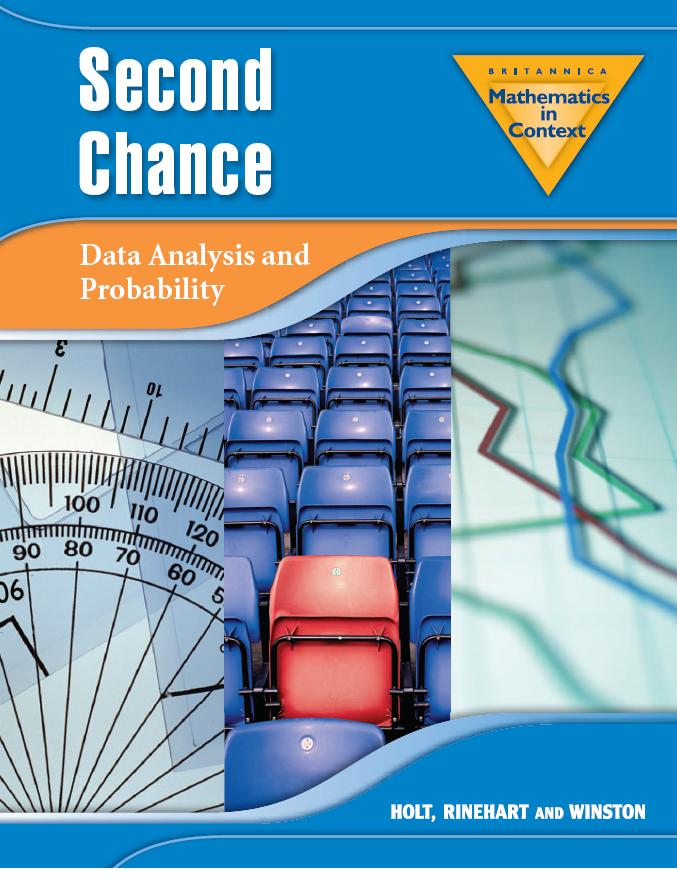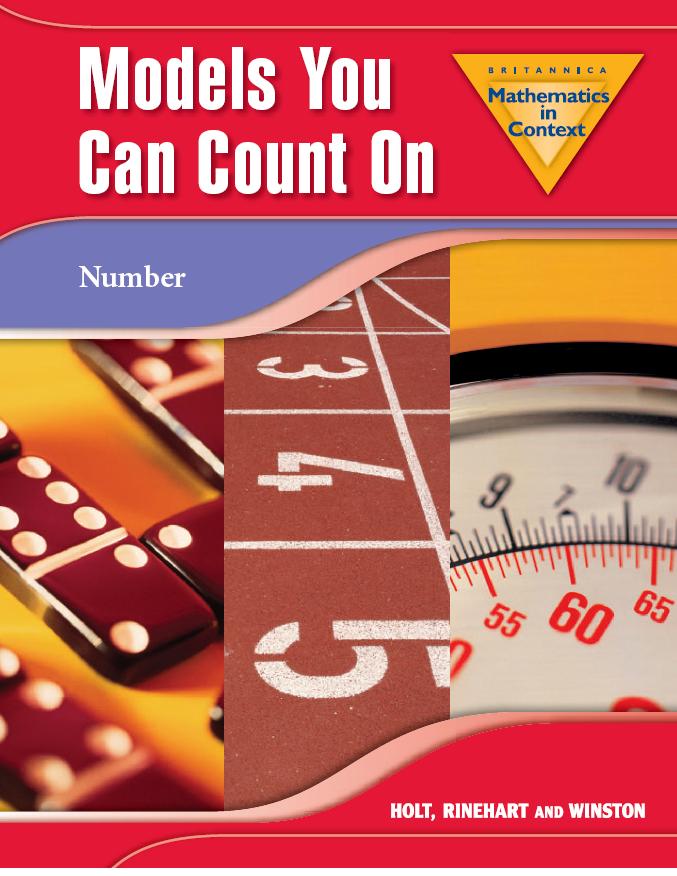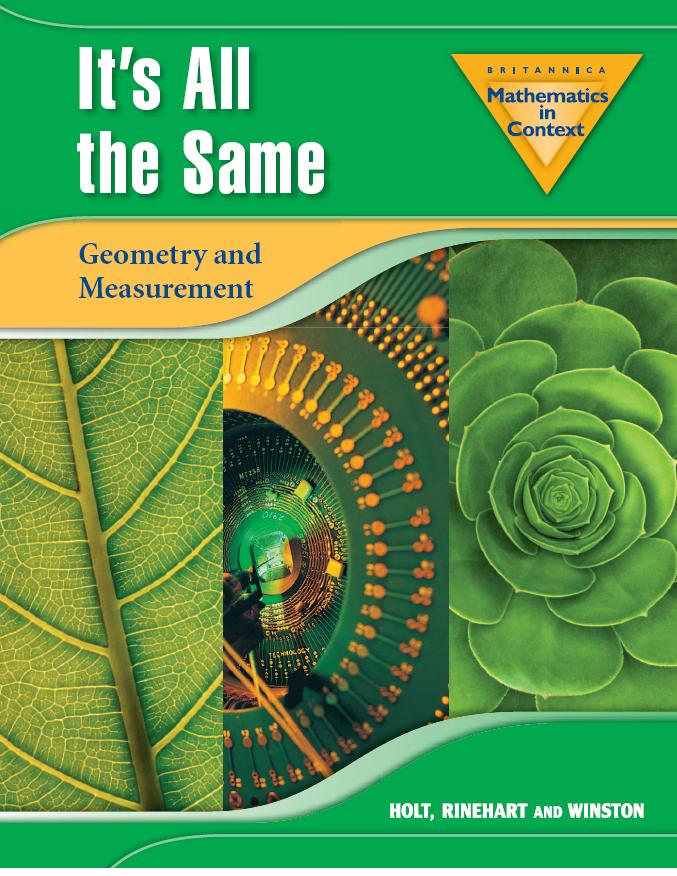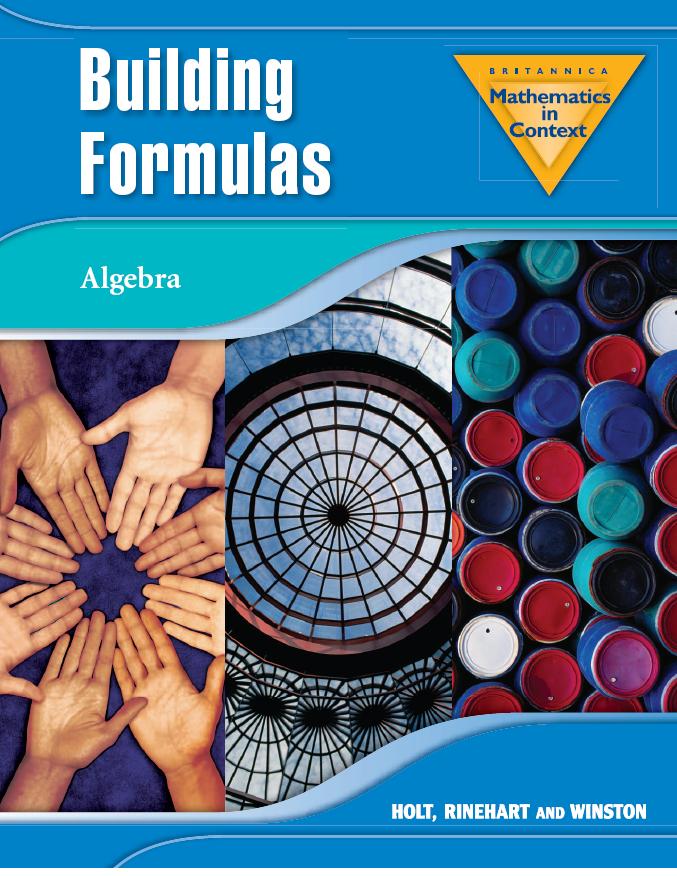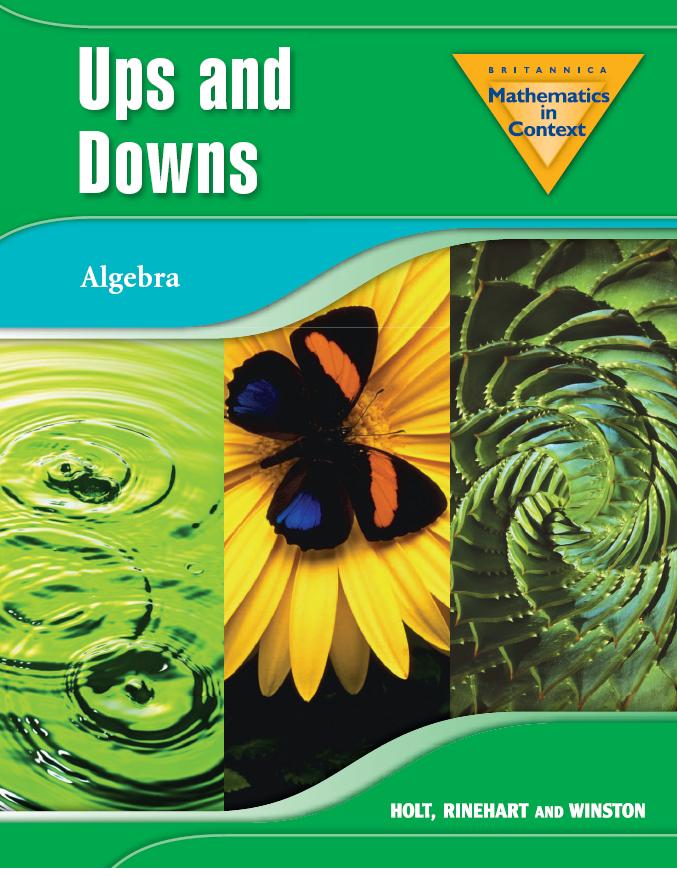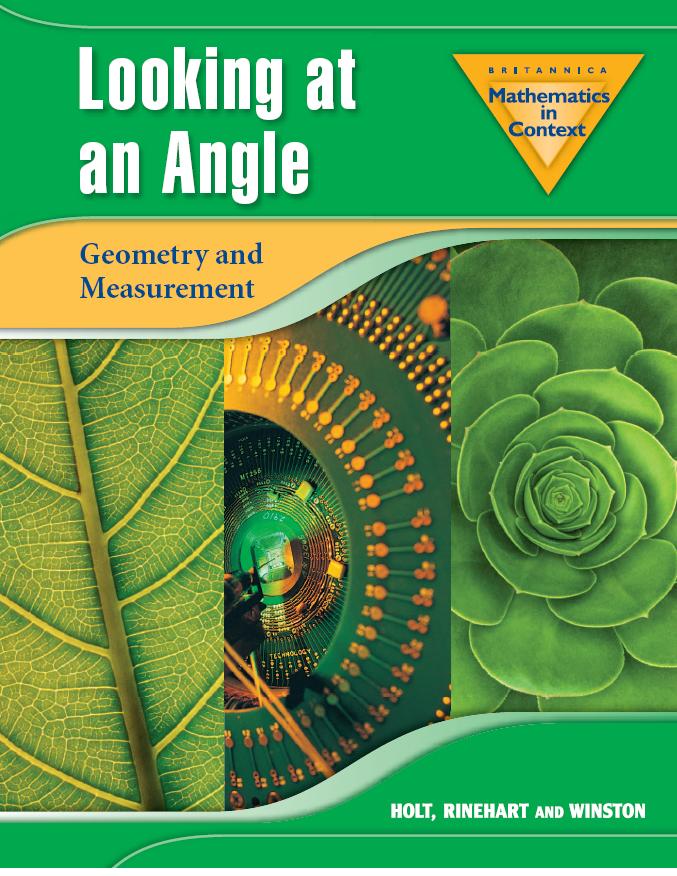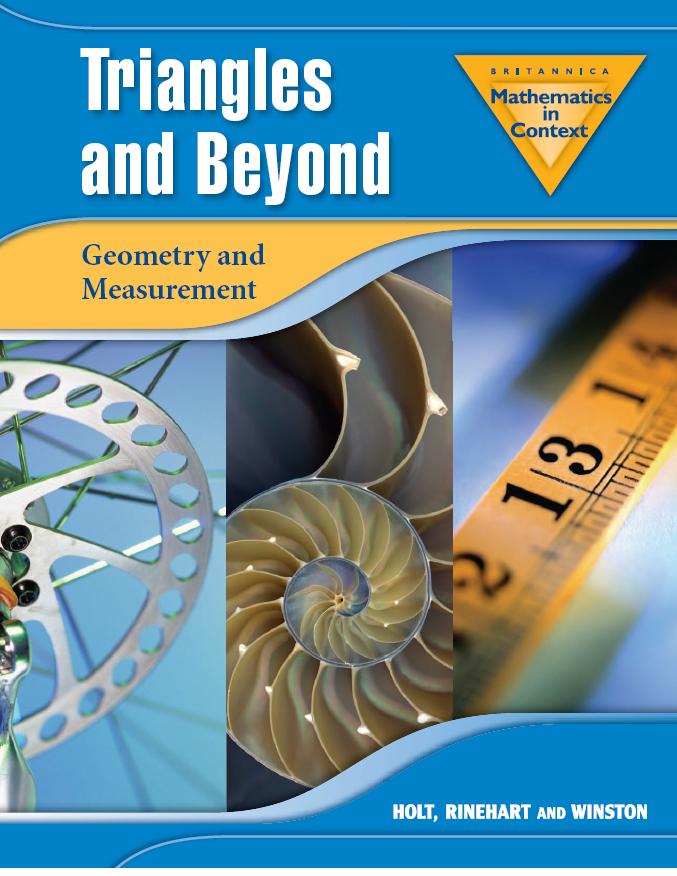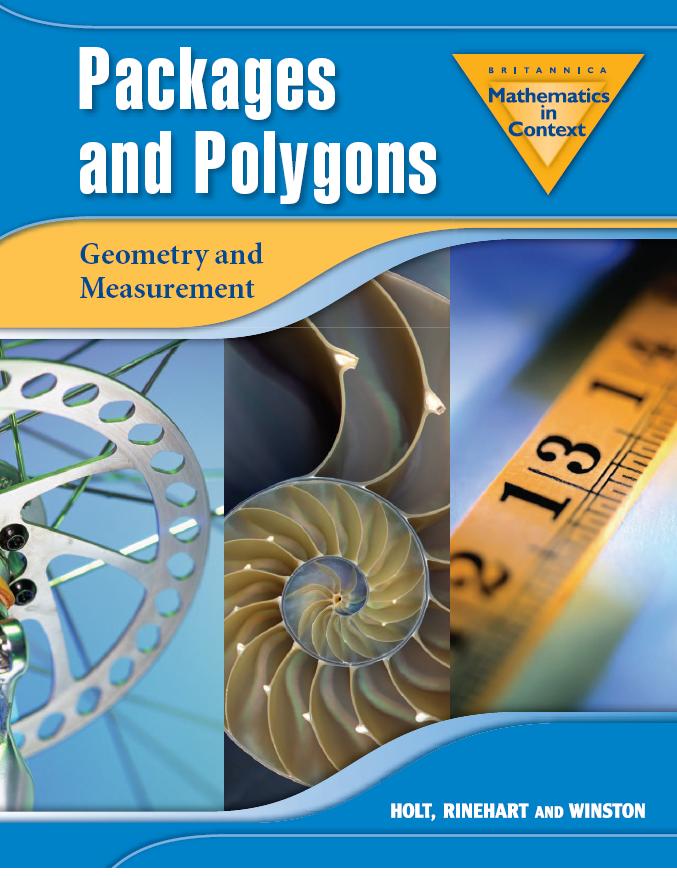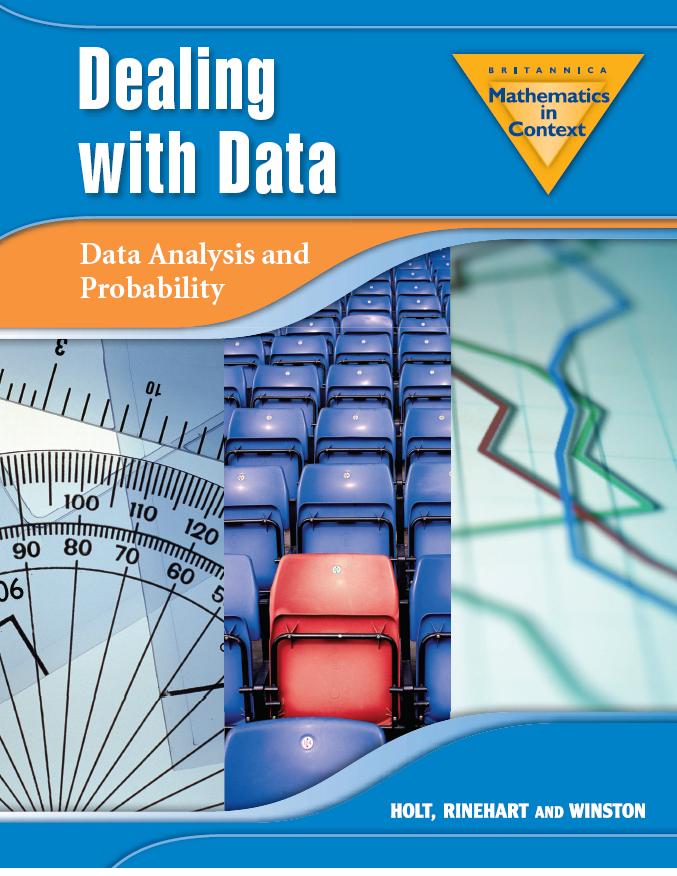السلام عليكم
اليكم احبتي هذه السلسلة الجميلة واللطيفة من كتب الرياضيات
Mathematics in Context
===============
Mathematics in Context: Facts and Factors
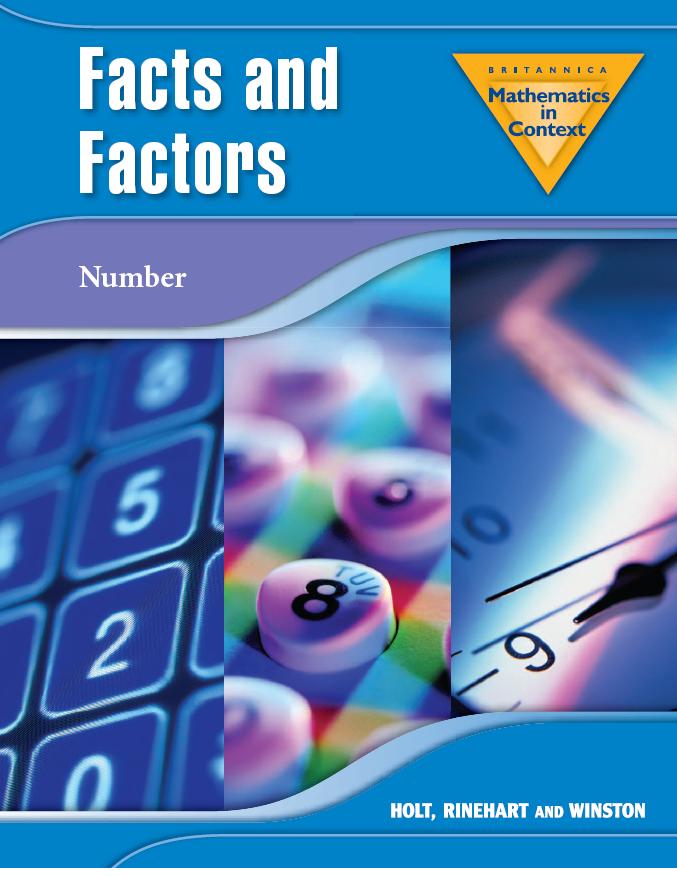
Encycbrita, "Mathematics in Context: Facts and Factors"
Holt McDougal | 2006 | ISBN: 0030385644 | 66 pages | PDF | 2,6 MB
Dear Student,
The numbers we use today are widely
used by people all over the world.
This might surprise you since there
are about 190 independent countries in the world, speaking over
5,000 different languages! This was not always the case. In the
unit Facts and Factors, you will investigate how ancient civilizations
wrote numbers and performed number computations. Looking into
the past will help you make more
sense of the way you write and
compute with numbers. You will
look into other numbering
systems in use today.
You will investigate some properties of digital photographs. By doing
so, you will learn more about the properties of numbers. How many
different pairs of numbers can you multiply to find a product of 36?
How about for a product of 51 or 53? You will expand your
understanding of all the real numbers.
We hope you enjoy this unit.
http://uploading.com/files/I68OI2O9/FactFactor.rar.html
========
http://depositfiles.com/ru/files/e9ne9a7k4/
========
http://rapidshare.com/files/210863514/FactFactor.rar
اليكم احبتي هذه السلسلة الجميلة واللطيفة من كتب الرياضيات
Mathematics in Context
===============
Mathematics in Context: Facts and Factors

Encycbrita, "Mathematics in Context: Facts and Factors"
Holt McDougal | 2006 | ISBN: 0030385644 | 66 pages | PDF | 2,6 MB
Dear Student,
The numbers we use today are widely
used by people all over the world.
This might surprise you since there
are about 190 independent countries in the world, speaking over
5,000 different languages! This was not always the case. In the
unit Facts and Factors, you will investigate how ancient civilizations
wrote numbers and performed number computations. Looking into
the past will help you make more
sense of the way you write and
compute with numbers. You will
look into other numbering
systems in use today.
You will investigate some properties of digital photographs. By doing
so, you will learn more about the properties of numbers. How many
different pairs of numbers can you multiply to find a product of 36?
How about for a product of 51 or 53? You will expand your
understanding of all the real numbers.
We hope you enjoy this unit.
http://uploading.com/files/I68OI2O9/FactFactor.rar.html
========
http://depositfiles.com/ru/files/e9ne9a7k4/
========
http://rapidshare.com/files/210863514/FactFactor.rar

